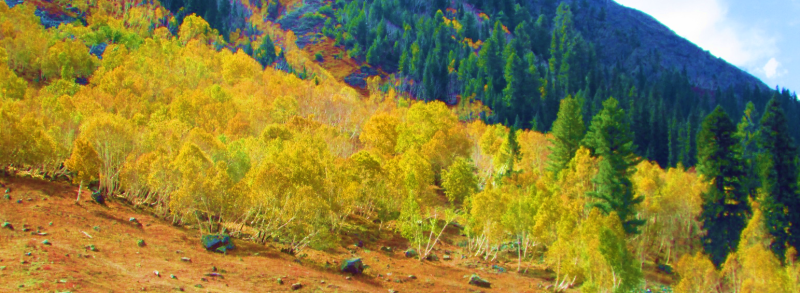Forest, Wildlife & Environment Department Government of Gilgit-Baltistan

Betula utilis (Cupuliferae)
COMMON NAMES: Bhurj Patta, Birch
Local name: Jonzi, Taliyang
Description:
Trees or small shrubs, 2-15 m tall. Bark peeling horizontally, white, brownish or reddish-white. Young shoots pubescent, older glabrescent. Leaves ovate or rhomboid, 2.5-8.2 cm x 1.8-6.2 cm, base rounded, subcordate or cuneate, margin doubly serrate to sub-serrate, the surface sparsely pilose, often villous at the angles of the veins on the under surface; acute or acuminate; nerve pairs 6-9(-11). Petiole 0.9-2 cm long, pilose to pubescent. Male flowers in catkins 3-3.7 cm x c.4 mm. Bract is broadly ovate-obtuse, c. 1.7 mm long, pubescent on the inside; bracteoles more or less navicular, c. 1.2 mm long, ciliate. Filament inconspicuously forked, anthers c. the size of the bracteoles, oblong, sometimes aristate at the tip. Strobili 2.5-4 cm x c. 1.2 cm. Styles are variable in size. Fruiting scale 8-9 mm long, woody, lobes minutely ciliate; median lobe 4-5 mm long, linear-lanceolate, longer than the 2 erect or outspread laterals. Nut elliptic—ovate, 2.5-3 mm long, as broad as or broader than the wing. Wing sometimes with 1-2 linear appendages at the apex.
Distribution and Ecology:
Mainly located all over Gilgit-Baltistan. The temperate Himalaya, from Kashmir to Bhutan and Afghanistan.
Birch is commonly found at the upper limit of trees, from 3000-4500 m, usually gregarious at places. A very polymorphic species as regards the shape and the number of veins of the leaf, size of the male catkins and the nature of the fruiting scale, which gradually change from the Western to the Eastern limit of its distribution range. I consider this to be an aggregate species. Some authors regard Betula jacquemontii Spach as a distinct species (Beans, Trees and Shrubs, Hardy in the British Isles, ed.8.1:434.1970 and Borowicz in Rech.f., Fl.lran.96.4.1972) but there is so much variation in the different parts that it merges into Betula utilis D. Don and it is hard to separate these from one another. The bark is smooth and white peels horizontally and is used for roofing, for umbrella covers and as a substitute for writing paper. The leaves are used as fodder for cattle.
